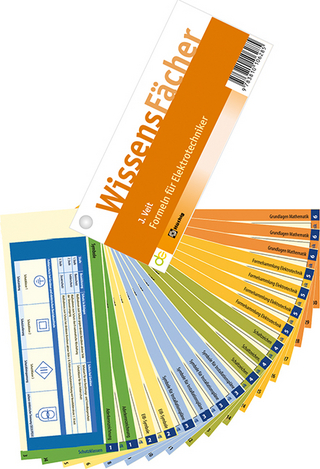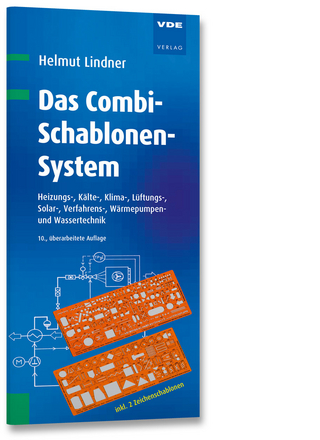
Imaging and Sensing for Unmanned Aircraft Systems: 2 Volume Set
Institution of Engineering and Technology
978-1-78561-679-2 (ISBN)
- Keine Verlagsinformationen verfügbar
- Artikel merken
Volume 1 concentrates on UAS control and performance methodologies including Computer Vision and Data Storage, Integrated Optical Flow for Detection and Avoidance Systems, Navigation and Intelligence, Modeling and Simulation, Multisensor Data Fusion, Vision in Micro-Aerial Vehicles (MAVs), Computer Vision in UAV using ROS, Security Aspects of UAV and Robot Operating System, Vision in Indoor and Outdoor Drones, Sensors and Computer Vision, and Small UAV for Persistent Surveillance.
Volume 2 focuses on UAS deployment and applications including UAV-CPSs as a Testbed for New Technologies and a Primer to Industry 5.0, Human-Machine Interface Design, Open Source Software (OSS) and Hardware (OSH), Image Transmission in MIMO-OSTBC System, Image Database, Communications Requirements, Video Streaming, and Communications Links, Multispectral vs Hyperspectral Imaging, Aerial Imaging and Reconstruction of Infrastructures, Deep Learning as an Alternative to Super Resolution Imaging, and Quality of Experience (QoE) and Quality of Service (QoS).
Vania Estrela is a faculty/researcher at Telecommunications Department, Universidade Federal Fluminense (UFF) and a visiting scholar at UNICAMP. Her research interests include biomedical engineering, electronic instrumentation, modelling/simulation, sustainable design, multimedia, artificial intelligence, remote sensing, STEM education, environment, and digital inclusion. She has served as a reviewer for IEEE, Elsevier, ACM, IET, Springer-Verlag, and MDPI. She has extensive experience as a project manager, post-graduate advisor (M.Sc. and D.Sc.), as well as an editor of books and special issues. Jude Hemanth is an associate professor in the ECE Department of Karunya University (KU), India. He is a member of the IEEE task force on deep learning and serves as associate editor and editorial board member for several international refereed journals. Osamu Saotome is a professor at the Instituto Tecnologico de Aeronautica (ITA), Brazil. He has been involved in several international research and cooperation projects with the Brazilian Air Force, INPE, IEAv (France, Sweden, USA, and Japan). George Nikolakopoulos is a professor in robotics and automation at the Department of Computer Science, Electrical and Space Engineering at Lulea University of Technology (LTU), Sweden. He is also a member of the ARTEMIS Scientific Council of the European Commission. He has significant experience in Managing European and National R&D&I projects funded by the EU, ESA, Swedish and the Greek National Ministry of Research. Roberto Sabatini is a professor of aerospace engineering and aviation in the School of Engineering at RMIT University (Australia) specialising in Avionics and Intelligent/Autonomous Systems for Aerospace and Defence applications. Currently, he serves as Deputy Director (Aerospace) of the Sir Lawrence Wackett Centre and Chair of the Cyber-Physical Systems Group at RMIT University. Professor Sabatini is a Fellow and Executive Member of the Institution of Engineers Australia, Fellow of the Royal Aeronautical Society, and Fellow the Royal Institute of Navigation. Throughout his career, he led numerous industry and government-funded research projects and he has authored or co-authored over 250 peer-reviewed international publications. In addition to his primary faculty duties, Professor Sabatini serves as Vice-Chair of the IEEE-AESS Avionics Systems Panel and editor for several high-impact international journals.
Volume 1
Chapter 1: Introduction to advances in UAV avionics for imaging and sensing
Chapter 2: Computer vision and data storage in UAVs
Chapter 3: Integrated optical flow for situation awareness, detection and avoidance systems in UAV systems
Chapter 4: Introduction to navigation and intelligence for UAVs relying on computer vision
Chapter 5: Modelling and simulation of UAV systems
Chapter 6: Multisensor data fusion for vision-based UAV navigation and guidance
Chapter 7: Vision-based UAV pose estimation
Chapter 8: Vision in micro-aerial vehicles
Chapter 9: Computer vision in UAV using ROS
Chapter 10: Security aspects of UAV and robot operating system
Chapter 11: Vision in indoor and outdoor drones
Chapter 12: Sensors and computer vision as a means to monitor and maintain a UAV structural health
Chapter 13: Small UAV: persistent surveillance made possible
Chapter 14: Conclusions
Volume 2
Chapter 1: UAV-CPSs as a test bed for new technologies and a primer to Industry 5.0
Chapter 2: UAS human factors and human-machine interface design
Chapter 3: Open-source software (OSS) and hardware (OSH) in UAVs
Chapter 4: Image transmission in UAV MIMO UWB-OSTBC system over Rayleigh channel using multiple description coding (MDC)
Chapter 5: Image database of low-altitude UAV flights with flight condition-logged for photogrammetry, remote sensing, and computer vision
Chapter 6: Communications requirements, video streaming, communications links and networked UAVs
Chapter 7: Multispectral vs hyperspectral imaging for unmanned aerial vehicles: current and prospective state of affairs
Chapter 8: Aerial imaging and reconstruction of infrastructures by UAVs
Chapter 9: Deep learning as an alternative to super-resolution imaging in UAV systems
Chapter 10: Quality of experience (QoE) and quality of service (QoS) in UAV systems
Chapter 11: Conclusions
| Erscheint lt. Verlag | 1.5.2020 |
|---|---|
| Reihe/Serie | Control, Robotics and Sensors |
| Verlagsort | Stevenage |
| Sprache | englisch |
| Maße | 156 x 234 mm |
| Themenwelt | Technik ► Elektrotechnik / Energietechnik |
| Technik ► Fahrzeugbau / Schiffbau | |
| ISBN-10 | 1-78561-679-X / 178561679X |
| ISBN-13 | 978-1-78561-679-2 / 9781785616792 |
| Zustand | Neuware |
| Haben Sie eine Frage zum Produkt? |
aus dem Bereich


